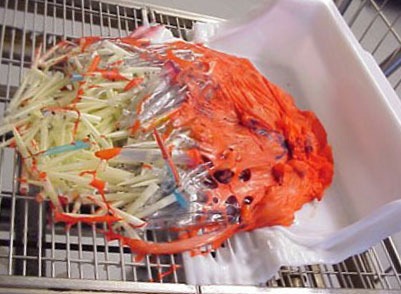Envetec Insight
Onsite Biohazardous Treatment Technology:
Thermal vs. Non-Thermal
The global push for sustainability is prompting industries to assess their environmental impact, particularly regarding biohazardous waste disposal and medical waste treatment. Traditional thermal technologies, such as autoclaves, have been the standard for many years. However, non-thermal alternatives, such as Envetec’s GENERATIONS technology, are emerging as viable options. This post examines the differences between thermal and non-thermal waste treatment technologies and explores why non-thermal methods may be more sustainable for biohazardous waste disposal.
The Limitations of Thermal Technologies
Thermal treatment methods like autoclaves sterilize waste through high heat (steam) and pressure, which can effectively neutralize pathogens. However, these processes have several notable drawbacks:
- High Energy Use: Autoclaves and incinerators require significant energy to maintain the necessary high temperatures, contributing to a larger carbon footprint.
- Water Consumption: Thermal methods, particularly autoclaves, consume large volumes of water, raising sustainability concerns in industries such as healthcare.
- Terminal Waste Chain: The extreme heat involved in thermal processes can damage treated plastic waste, making it unsuitable for recycling and undermining circular economy efforts, including medical waste recycling and other biohazardous waste recycling.

(Source: https://www.bu.edu/research/forms-policies/autoclave-safety-guidelines/)
The Emergence of Non-Thermal Waste Treatment Technologies
- Non-thermal technologies, including GENERATIONS, offer an alternative approach that does not rely on heat for biohazardous waste recycling. Instead, they utilize advanced disinfection processes that are typically more energy and water-efficient and allow for waste recyclability.
Key Differences with GENERATIONS:
- Energy Efficiency: GENERATIONS operates without heat, resulting in significantly lower energy consumption compared to autoclaves or incinerators.
- Water Savings: Non-thermal technologies are generally more water-efficient. GENERATIONS was found to use up to 70% less water per cycle than traditional onsite technologies like autoclaves.
- Recyclability: Unlike thermal methods that can compromise the integrity of treated plastic, GENERATIONS preserves the quality of high-grade laboratory & clinical plastics, enabling them to be recycled, aligning with biohazard waste disposal and clinical waste collection practices.
- Reduced Carbon Emissions: Independent third-party reports found GENERATIONS technology can reduce carbon emissions by up to 90% compared to conventional thermal methods, making it an attractive choice for biohazardous waste treatment companies.
Benefits of Non-Thermal Technologies
- Lower Operating Costs: With reduced energy and water requirements, non-thermal technologies can lead to lower operational expenses.
- Environmental Responsibility: Non-thermal systems produce fewer greenhouse gases, utilize less water, and facilitate recycling, making them more operationally sustainable than thermal options.
- Safety and Convenience: By treating waste onsite without heat, GENERATIONS minimizes risks associated with clinical waste collection, transporting untreated biomedical disposal waste and hazards linked to thermal processing.

Conclusion
As various industries, including healthcare, life science, and food & beverage, seek to minimize their environmental footprint, the transition from thermal to non-thermal biohazardous waste recycling technologies is becoming increasingly relevant. Technologies such as Envetec’s GENERATIONS address operational concerns such as efficiency, safety, and cost alongside environmental concerns like energy consumption, water usage, and circular economy compatibility. Embracing novel non-thermal technologies such as this for onsite treatment has become an attractive option for both site-level and executive stakeholders.